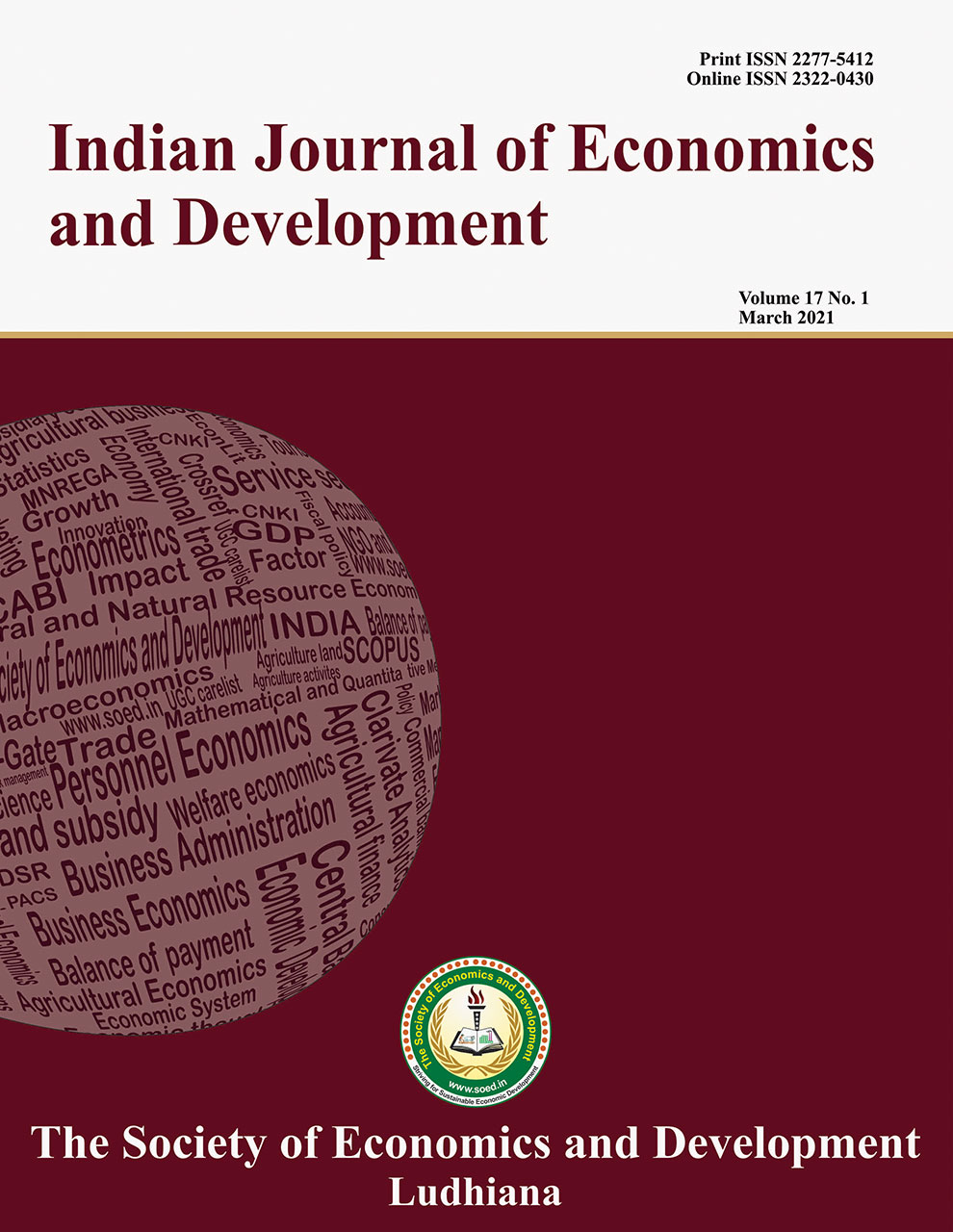Foreign Direct Investment in the Make in India Era

Price: ₹ 500
Author: Tophan Patra , J. Manohar Rao , and Tapan Kumar Nayak
Author Address: Assistant Professor, and Professor, Institute of Management Studies (IMS), Ghaziabad-201009 (UP), and Professor, School of Economics, University of Hyderabad, Hyderabad-500046 (Telangana)
Keywords: Economic growth, foreign direct investment, multiple regression equation
JEL Codes: F43, F21, C30, O24
Abstract
The present study attempted to examine the recent effects of FDI on India's economic growth in the Make in India initiative (MII) launched by the government. The trends of FDI inflows in India showed that when the CAGR of FDI inflows was -2.78 percent from 2008 to 2014 (pre-Make in India), the CAGR of FDI inflows was 8.54 percent between 2014 to 2020 (Post-Make in India). Further, the OLS results showed that the variables such as FDI inflows, trade openness, and exchange rate significantly impact India's economic growth. The dummy variable that stood for the Make in India initiative had a statistically significant impact on growth. The predictions about FDI inflows showed an upward trajectory since 2021-2022, which suggested that India may have further scope to attract more FDI into the country if they continue to do reforms like before and enhance competitiveness, and FDI may have a long-term impact on GDP.
Description
Indian Journal of Economics and Development
Volume 17 No. 2, 2021, 474-479
DOI: https://doi.org/10.35716/IJED/20138
Indexed in Clarivate Analytics (ESCI) of WoS
Scopus: Title Accepted
NAAS Score: 5.15



